Art World
WAGE Just Released a Calculator That Tells Artists If They’re Getting Paid Fairly for Their Work
WAGENCY offers artists an online system to calculate, request, and negotiate fees for everything from exhibitions to lectures.
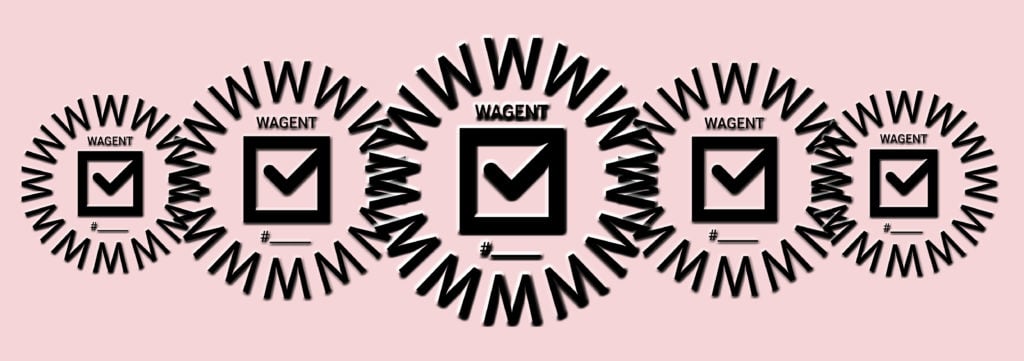
WAGENCY offers artists an online system to calculate, request, and negotiate fees for everything from exhibitions to lectures.

For artists around the world, working with prestigious arts nonprofits can be a surprisingly bittersweet experience. The benefits of bypassing the private sector and adding hallowed or forward-thinking institutions to your CV are often tainted by low or nonexistent compensation. This means artists can, and often do, actually lose money for the sake of advancing their careers.
But artists of all kinds have just gained access to a new tool to help re-balance the scales, thanks to Working Artists and the Greater Economy (WAGE), the New York-based activist organization devoted to helping artists and arts nonprofits establish equitable, self-regulating labor relationships. This week, WAGE launched WAGENCY, an online system that allows artists to easily calculate equitable compensation for 15 different categories of artistic labor at any of thousands of American nonprofits, as well as send and manage fee requests to any organization soliciting their participation.
Lise Soskolne, WAGE’s core organizer since 2012, tells artnet News that WAGENCY has been a long time coming. The platform emerged from a three-year planning and implementation process that combined her efforts with those of several current and former members of WAGE’s board, a small group of outside collaborators, and dozens of artists offering feedback.
The end result is what Soskolne describes as a “pressure mechanism” designed to help counteract the typical power dynamic in the exchange between artists and institutions. Prior to WAGENCY, she explains, “Institutions would offer fees if you’re lucky. But what we’re trying to do is assert that artists are contracted workers, and contracted workers have rates.”
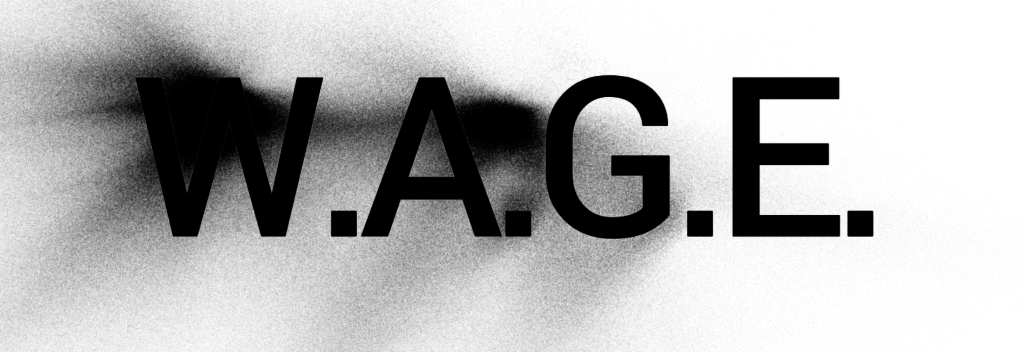
Screenshot from WAGE’s website.
WAGENCY’s rates, as well as the 15 categories of contracted labor they correspond to, are identical to those in the organization’s longer-running system of WAGE Certification, whereby a nonprofit commits to one fiscal year of paying minimum fees set by WAGE to all artists in its program. In both initiatives, the specific fees are based on each organization’s total annual operating expenses (TAOE). They include everything from solo and group exhibitions to performances, lectures, and published contributions.
Using the system involves two steps. First, an artist must register online as a WAGENT and pay an initial monthly fee of five dollars. In exchange, they receive a nontransferable membership number and a dynamic SVG logo identifying them as either a certified or active WAGENT (more on this later).
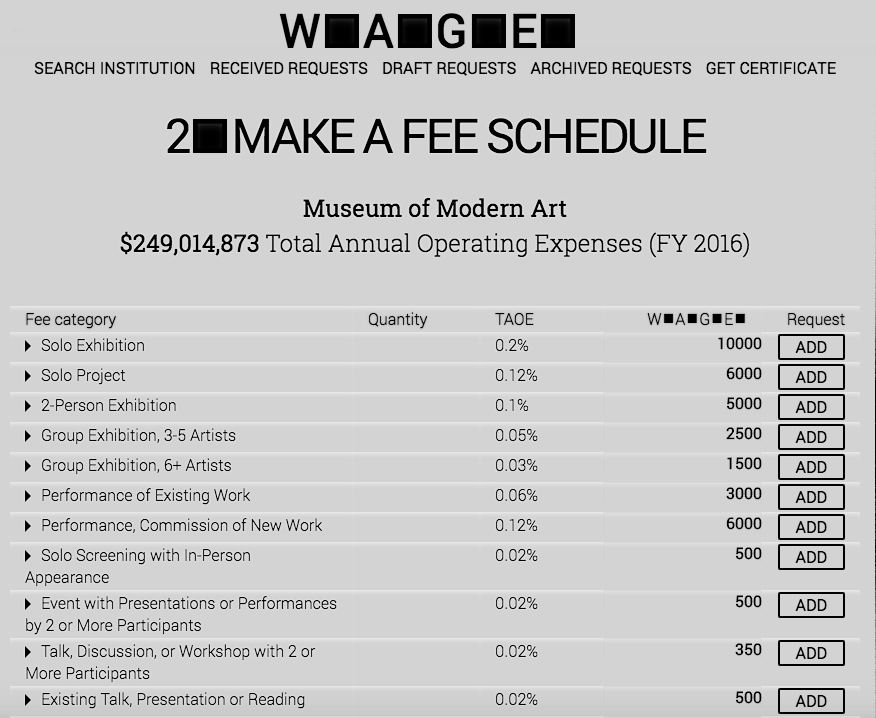
Sample WAGENCY fee schedule for the Museum of Modern Art, New York.
Second, an artist must use the platform to begin compiling and sending their own fee requests. While it is each artist’s responsibility to take action, WAGE’s platform auto-populates the forms by providing an easily searchable database of American nonprofits; an itemized list of the 15 labor categories and their associated rate, each of which can be added to the schedule with a mouse click (and in some cases, a few keystrokes to provide, say, the number of words in a commissioned essay); and a customizable message field pre-loaded with WAGE-approved text to the recipient explaining the fee request.
The WAGENCY platform provides more than just administrative support. Each fee schedule generates on WAGE letterhead and arrives in its recipient’s inbox with WAGE as the sender. These details help create the impression of a more formal union without actually being one. As Soskolne puts it, “WAGE doesn’t represent artists. Artists represent themselves through WAGE.”
Sending a fee request is not necessarily the end of the process, though. Each one includes a button reading “Respond to Request,” which the recipient clicks through to either “accept” or “negotiate” the rate.
Select the former, and the WAGENCY platform confirms the transaction, giving the artist proof of the agreement and a field to update when they receive payment in full. Select “negotiate,” however, and the nonprofit is provided with a field to make a counter-offer. Doing so continues the back-and-forth between the two parties—all facilitated through the WAGENCY platform through a similar series of emailed, button-enhanced forms—until they either reach an agreement or the artist declines to work with the nonprofit. (All information about the transactions on the platform remains confidential, no matter the outcome.)
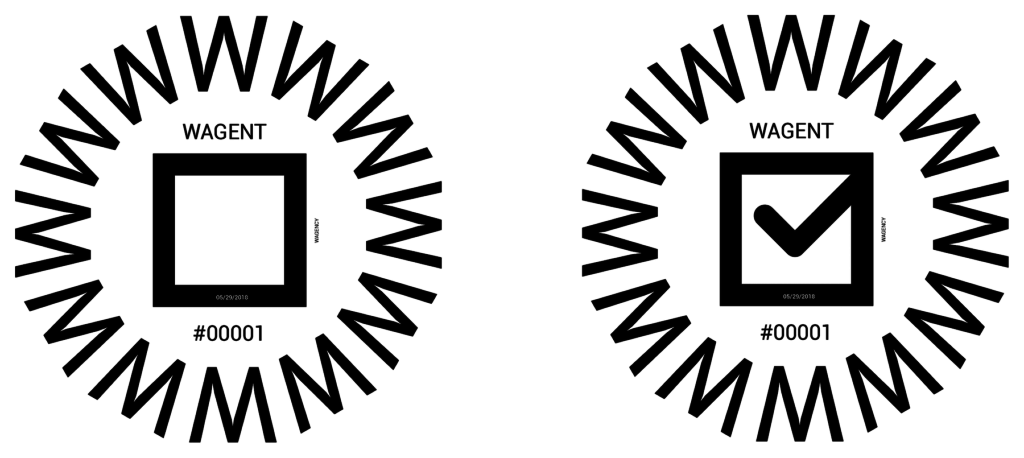
The logos for an active WAGENT (left) versus a certified WAGENT (right). Image courtesy of WAGE.
The different forks in this adventure lead us back to the distinction between “certified WAGENTs” and “active WAGENTs.” Artists only become certified by either agreeing to provide their labor at no less than the rate on their original fee schedule or declining a lower counter-offer and walking away from the opportunity (or “opportunity”). However, the platform’s negotiation process can also resolve with the artist accepting a lower fee than the one recommended by WAGE. In this case, they become an active WAGENT, but not a certified one. In either case, the SVG logo mentioned earlier will reflect the artist’s status: a checked box for certified, an unchecked box for active.
When asked about the reasoning behind this two-tiered structure, Soskolne explains, “Not all artists can afford to withhold labor, turn down opportunities, or make demands like this. The bulk of our constituency is people who don’t have a lot of leverage.” In this framework, even if an artist decides to settle for less than the minimum WAGE, the sheer act of demanding remuneration moves the debate about equitable payment further into the realm of action. WAGE believes that effort still has value and deserves recognition.
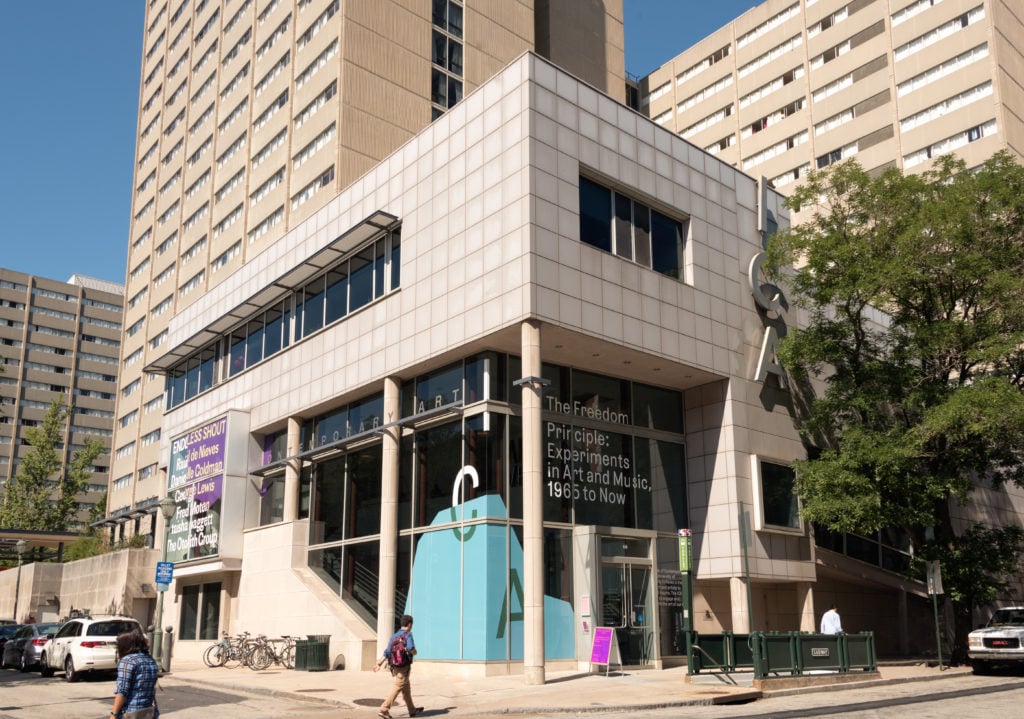
The Institute of Contemporary Art at the University of Pennsylvania. Courtesy of the Institute of Contemporary Art/University of Pennsylvania.
Soskolne hopes WAGENCY—essentially, WAGE certification for artists—can build on the momentum of WAGE certification for nonprofits. After a “big surge” in interest this summer, over 60 organizations across the US have committed to earning certification. This group includes Philadelphia’s Institute of Contemporary Art, which made history by becoming the first WAGE Certified museum this March.
It’s a sensible hope, since the two initiatives stand side by side in the same fight. “We’re all being squeezed by the same problem: neoliberal policymaking in the forms of defunding, privatization, and deregulation,” Soskolne says. “Many nonprofits are suffering in the same way artists are, and they’re just passing their pain along to us.”
Ultimately, the success of WAGENCY—and of WAGE itself—depends on mass adoption. According to Soskolne, WAGENCY is “a test of what artists really want and what they are actually willing to do” to create change for themselves in the nonprofit sector. The more artists register and begin sending fee requests, the more pressure ratchets onto nonprofits to fulfill them. It’s a way of decentralizing the struggle for equitable compensation in an industry where the standard boss-versus-employee dynamic often does not apply.
Soskolne is exactly right when she says that the work WAGE does “should be shared by all artists. It can’t be done by one organization putting pressure on thousands of institutions. It has to be thousands of artists applying that same pressure.” Now the question becomes: How many artists will take on the challenge?